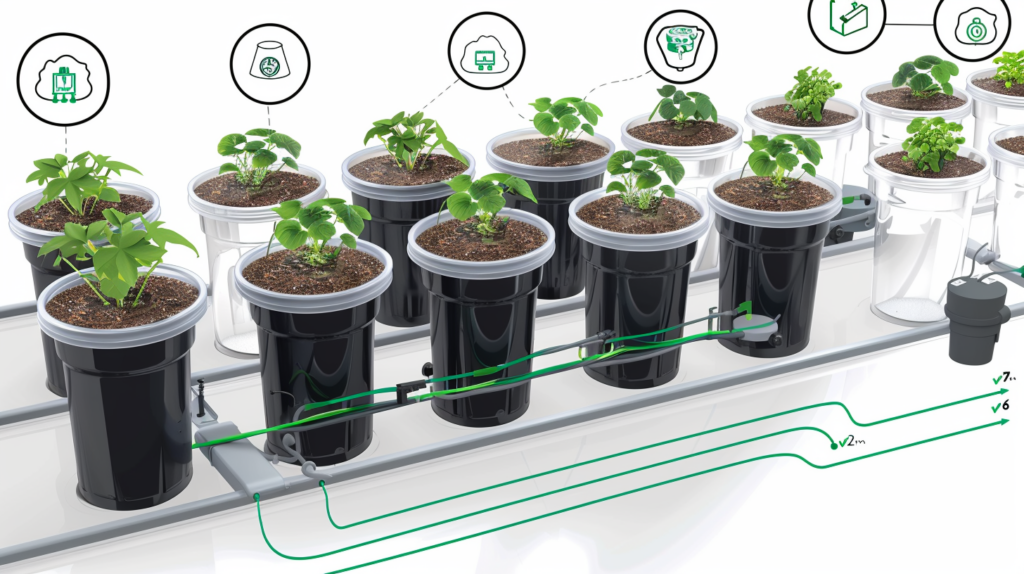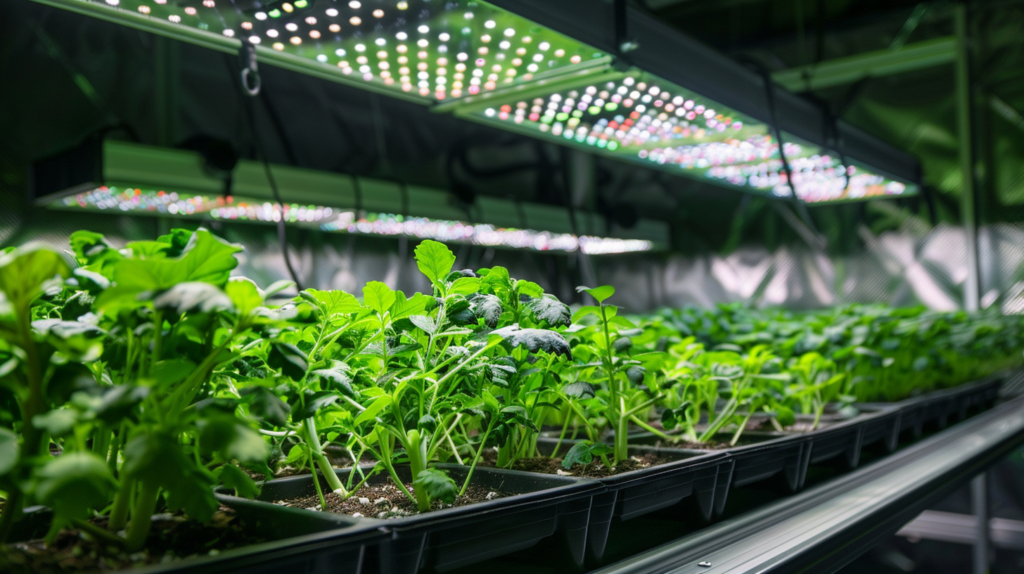Introduction
Crop King Hydroponics is a leading-edge indoor gardening system that empowers you to cultivate plants soil-free, utilizing nutrient-fortified water solutions. This approach boasts a plethora of advantages, such as the efficient utilization of water and nutrients, accelerated plant growth, and augmented yields. Acquiring proficiency in hydroponic methodologies is pivotal for indoor gardening triumph, necessitating an intimate comprehension of plant requisites, environmental conditions, and system upkeep.
In this discourse, I will divulge five indispensable tips that will enable you to harness the full prowess of your Crop King Hydroponics arrangement. These guidelines are designed to assist gardeners of all experience levels in refining their hydroponic systems for an abundant production of fresh, nutrient-rich crops. Adherence to these recommendations will not only amplify your harvests but will also enhance your understanding of the intricacies of hydroponic farming.
Acknowledging the hurdles inherent in indoor horticulture is vital. Ensuring proper system installation, vigilant monitoring, and diligent maintenance are key to surmounting challenges such as nutrient imbalances, pest infestations, and plant maladies. By mastering these essential tips, you will be aptly prepared to navigate potential difficulties and revel in a prosperous hydroponic garden.
Overview of Crop King Hydroponics and its Benefits
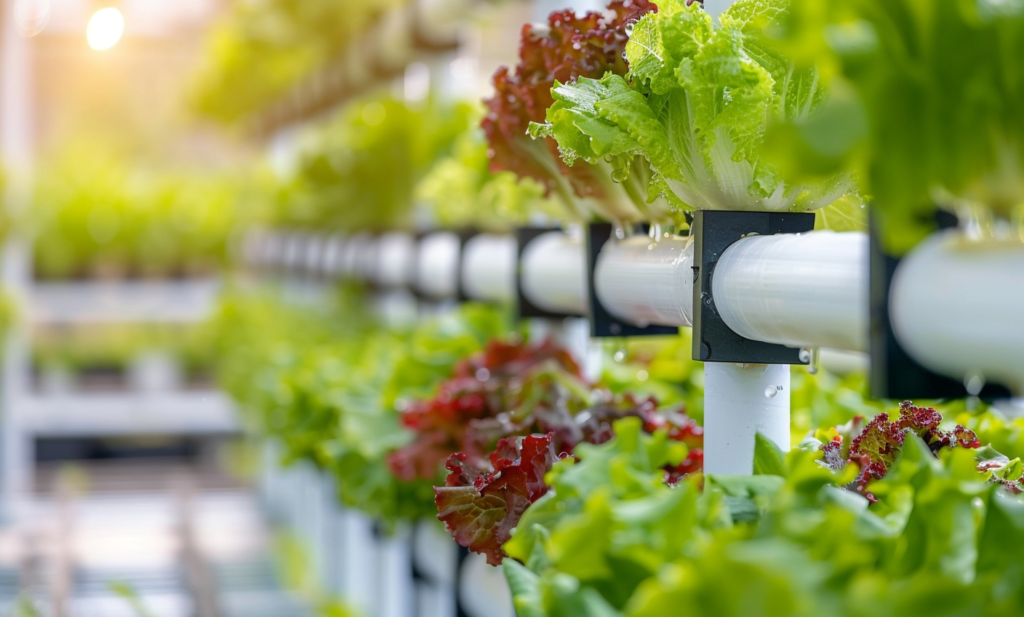
Crop King Hydroponics stands at the forefront of indoor gardening innovation, transforming the cultivation landscape. This advanced system diverges from conventional soil-based gardening by employing a nutrient-dense water solution for plant nourishment, thus bypassing the need for soil. Crop King Hydroponics provides a meticulously controlled environment, enabling the year-round cultivation of diverse crops, unaffected by external climatic variations or soil conditions.
A standout feature of Crop King Hydroponics is its exceptional efficiency in water and nutrient usage. The system’s precision in delivering the precise nutrients required by plants reduces waste significantly and enhances growth. Moreover, the elimination of soil curtails the likelihood of soil-borne pests and diseases, fostering healthier plant growth and increased yields.
The system’s design offers remarkable flexibility and conserves space effectively. Its capability for vertical stacking allows gardeners to expand their cultivation area vertically, reducing the ecological footprint. This adaptability renders Crop King Hydroponics an excellent option for a broad spectrum of gardeners, from urban enthusiasts to professional cultivators.
Additionally, the controlled conditions within Crop King Hydroponics guarantee steady and predictable growth cycles, affording gardeners better harvest planning and management. The system’s ability to adjust elements like lighting, temperature, and humidity tailors the environment to suit specific plant needs, culminating in produce of exceptional quality and taste.
Importance of Mastering Hydroponic Techniques for Successful Indoor Gardening
Achieving proficiency in hydroponic techniques is a cornerstone of success for indoor gardening enthusiasts. Hydroponics, a departure from traditional soil-based agriculture, necessitates an in-depth comprehension of plant biology, nutrient dynamics, and precise environmental management. Without a solid grasp of these essential elements, gardeners may encounter poor plant performance, nutritional imbalances, and potential crop failure.
Expertise in hydroponic methods empowers gardeners to customize the growth milieu to the exact requirements of their plants. Key factors such as optimal pH balance, nutrient solution strength, and pristine water conditions are vital for plant vigor and high yield. Mastery over environmental parameters, including lighting, temperature, and humidity, is also critical, allowing for the meticulous crafting of the perfect growing conditions.
In addition, a thorough knowledge of hydroponic system operation and upkeep is indispensable for circumventing and resolving prevalent issues such as pest infestations, disease outbreaks, and technical malfunctions. Implementing stringent cleaning protocols and conducting routine inspections can avert these obstacles, promoting a flourishing and enduring indoor garden.
Investing time and energy into honing hydroponic skills can significantly enhance the capabilities of your Crop King Hydroponics system, leading to superior harvests, exceptional produce quality, and a rewarding gardening experience.
Tip 1: Understand the Hydroponic System

Grasping the complexities of your Crop King Hydroponics setup is a critical step towards flourishing indoor gardening. Dedicate time to acquaint yourself with every part of the system, including the nutrient reservoir, grow trays, air pumps, and irrigation lines. It’s essential to comprehend how these components synergize to create an ideal environment for plant growth.
Ensuring your system is correctly assembled and maintained is key to its efficient operation. Conduct routine inspections and cleanings of all parts, adhering to the manufacturer’s instructions. Furthermore, gaining knowledge about the specific nutrient solutions and pH levels recommended for your setup and the types of plants you are growing is imperative. Keeping these factors within their optimal ranges is crucial for fostering robust plant health and averting issues related to nutrient deficiencies or excesses.
Explanation of the Crop King Hydroponics System Components
The Crop King Hydroponics system is engineered with a suite of critical components that synergistically foster a superior growing environment for plants. Central to the system is the nutrient reservoir, which stores the nutrient-enriched water solution vital for plant nourishment. This reservoir feeds the grow trays—where plants reside—via an intricate network of irrigation lines and pumps, ensuring the plants’ roots are immersed in or have access to the nutrient solution.
Grow trays are crafted to support the plants and their root systems effectively, facilitating efficient nutrient uptake. These trays, constructed from materials like plastic or expanded clay pebbles, often incorporate air stones or bubblers. Such additions are crucial for oxygenating the water, a step that is essential for promoting vigorous root development.
Air pumps within the system are indispensable, tasked with aerating the nutrient solution. This aeration is key to supplying roots with sufficient oxygen, circumventing the risks associated with stagnant water, such as root rot.
Moreover, the Crop King Hydroponics setup may be enhanced with pH and nutrient level monitors, enabling precise management of the water solution’s composition. Advanced systems might also integrate lighting solutions, timers, and devices to regulate environmental conditions—temperature, humidity, and light intensity—tailoring the environment to the specific needs of the plant species being cultivated.
A thorough understanding of each component’s role and maintenance needs is vital for the effective operation of your Crop King Hydroponics system, paving the way for abundant yields.
Importance of Proper Setup and Maintenance
The foundation of a thriving Crop King Hydroponics garden lies in the meticulous setup and ongoing maintenance of the system. Neglecting the manufacturer’s recommended guidelines can trigger a domino effect, resulting in poor plant growth, nutrient imbalances, and potential system breakdown.
During the setup phase, adhering closely to the manufacturer’s instructions is paramount. This ensures that every component is assembled accurately, connections are tight, and the system is calibrated for optimal performance. Overlooking these steps can lead to issues such as leaks, insufficient water circulation, or uneven nutrient delivery, which can severely impact plant health and yield.
Maintenance, carried out with the same level of diligence, is crucial for the system’s longevity and efficiency. Regular cleansing and sterilization of the nutrient reservoir, grow trays, and irrigation lines are essential to prevent the accumulation of harmful algae, bacteria, and pathogens. Moreover, consistent monitoring and adjustment of the pH levels, nutrient strength, and water quality are vital to sustain a conducive and balanced environment for plant growth.
Emphasizing proper setup and meticulous maintenance not only protects your investment but also enhances the performance and output of your Crop King Hydroponics system. This approach guarantees reliable and abundant harvests, season after season.
Recommended Nutrient Solutions and pH Levels
For gardeners utilizing the Crop King Hydroponics system, the key to unlocking exceptional plant growth lies in the precise application of nutrient solutions and the vigilant management of pH levels. While the specific needs can differ based on the plant species being grown, universally accepted practices exist.
Hydroponic nutrient solutions are crafted to deliver a comprehensive array of essential nutrients, including primary macronutrients like nitrogen, phosphorus, and potassium, alongside crucial micronutrients such as iron, calcium, and magnesium. These nutrient solutions are often provided in a concentrated form and should be diluted as per the manufacturer’s directions before introduction to the system’s reservoir.
The pH level is another critical factor, with most plants thriving within a range of 5.5 to 6.5. Deviating from this optimal pH window can lead to impaired nutrient absorption, potentially causing nutrient deficiencies or toxicities that may hinder plant development or cause harm. It is essential to consistently test and adjust the pH level using appropriate solutions or additives to maintain a conducive environment for plant growth.
Adhering to the recommended guidelines for nutrient solutions and pH levels tailored to your Crop King Hydroponics setup and plant selection is vital. This practice ensures that plants have access to the nutrients they need for robust growth and that you can look forward to abundant harvests.
Tip 2: Choose the Right Plants
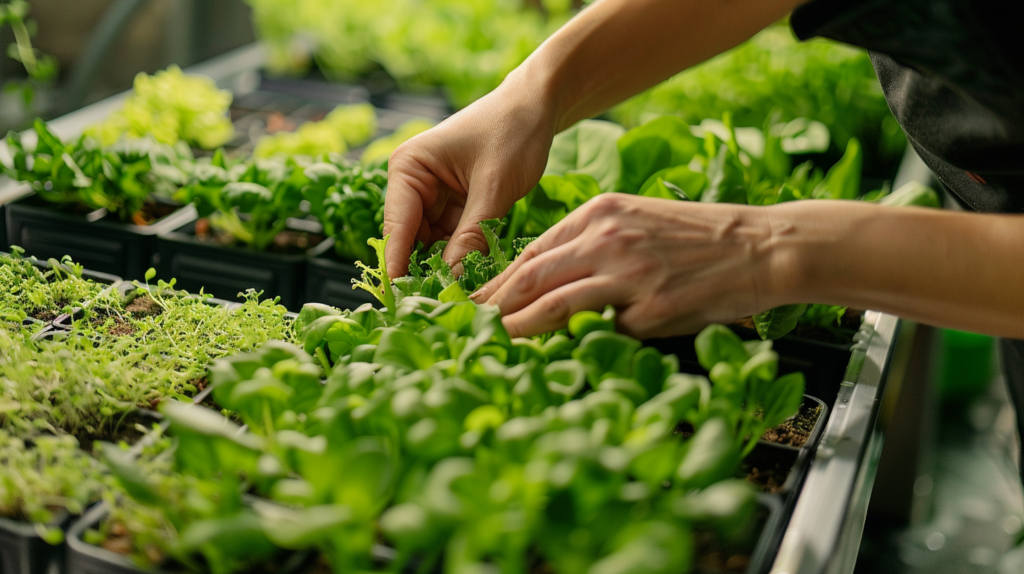
The selection of suitable plants is a pivotal element in the success of your Crop King Hydroponics system and your indoor gardening endeavors. It’s important to recognize that not every plant species is conducive to hydroponic growth; your choices here can greatly influence your harvest outcomes and overall satisfaction with gardening.
When deciding on plants, it’s essential to evaluate aspects such as their growth patterns, specific nutrient needs, and how well they adapt to a soilless environment. Certain plants are naturally predisposed to excel in hydroponic setups, whereas others might find it challenging or necessitate more attentive care.
Investing time in thorough research to identify plants that are compatible with hydroponic cultivation will pay dividends. Making informed decisions when choosing plants for your system is a strategic move that can lead to enhanced system efficiency and the reward of plentiful harvests.
Suitable Plant Varieties for Hydroponic Cultivation
In the realm of hydroponic gardening, some plant species are inherently more compatible with this cultivation method. Leafy greens such as lettuce, spinach, and kale are prime candidates due to their modest root system requirements and their propensity to flourish in environments rich in nutrients. Herbs including basil, mint, and cilantro are also well-suited for hydroponic systems, often yielding fresh and aromatic produce.
Fruiting plants, such as tomatoes, peppers, and cucumbers, are viable for hydroponic growth but may necessitate extra structural support and careful pruning to optimize their development. Berries, including strawberries and select berry varieties, are adaptable to hydroponic conditions and can produce delightful and generous harvests.
For enthusiasts of ornamental flora, a variety of flowers like orchids, anthuriums, and bromeliads can be adeptly grown using hydroponic methods, infusing your space with a spectrum of vivid hues and aesthetic appeal.
It is crucial to delve into the particular needs of each plant type to ensure that your Crop King Hydroponics system is well-equipped to meet their growth requirements. Choosing the right plant varieties not only enhances the efficiency of your indoor garden but also allows you to revel in an assortment of fresh, nutrient-packed produce.
Factors to Consider When Selecting Plants (Growth Rate, Nutrient Requirements, etc.)
Selecting the right plants for your Crop King Hydroponics system involves a thoughtful analysis of several key factors, not just their general compatibility with hydroponic growing. The growth rate of the plants, their specific nutrient demands, and how well they mesh with your hydroponic setup are all critical considerations.
Plants with a swift growth rate, such as many leafy greens and herbs, might necessitate more regular nutrient solution changes and trimming to keep their growth in check. Conversely, plants with a slower maturation process, like tomatoes or peppers, require a more extended period to reach harvest and a greater degree of patience.
Nutrient needs also vary widely among different plant species. While some plants will flourish with a general hydroponic nutrient solution, others might need a more tailored approach, including additional micronutrients to avoid deficiencies or toxicities that could compromise their health and productivity.
The physical characteristics and growth patterns of the plants are equally important. Climbing or sprawling plants may need extra support structures or more frequent pruning, whereas more compact varieties could be ideal for space-constrained hydroponic systems.
By giving careful thought to these aspects, you can curate a well-balanced and efficient indoor garden that aligns with your specific needs and the capabilities of your hydroponic system.
Tips for Starting with Seeds or Clones
Embarking on your hydroponic gardening journey presents the choice between beginning with seeds or utilizing clones, which are cuttings taken from mature plants. Each approach has its own set of benefits and necessitates distinct care strategies.
For those opting to start from seeds, it’s crucial to create an optimal environment for germination. This involves maintaining appropriate levels of warmth, moisture, and light. After the seeds have germinated and seedlings emerge, they should be gradually acclimated to the hydroponic system, giving their roots time to adjust to the new growing conditions.
On the other hand, starting with clones can accelerate the growing process since these are essentially young plants from the get-go. However, clones demand delicate handling during the transition to the hydroponic setup to avoid transplant shock and to encourage robust root development in their new environment.
Whichever route you choose, vigilant observation and care of these nascent plants are imperative. This includes fine-tuning nutrient concentrations and adjusting environmental factors to nurture their early stages of growth and ensure a smooth transition into mature, thriving plants in your hydroponic garden.
Tip 3: Optimize Environmental Conditions
For gardeners using the Crop King Hydroponics system, fine-tuning the environmental conditions is a pivotal aspect of fostering plant health and achieving maximum yield. Each plant species has unique requirements for light, temperature, humidity, and air flow that, when met, can significantly boost their growth.
Creating a controlled microclimate that caters to the specific needs of your plants is essential. This involves a vigilant approach to managing and adjusting these environmental factors as needed. Doing so can avert common challenges such as inhibited growth, nutritional issues, and invasions by pests.
Ensuring that the environmental conditions within your hydroponic setup are kept at their optimum not only promotes robust plant growth but also contributes to the superior quality and taste of the hydroponically grown produce.
Importance of Proper Lighting (Intensity, Duration, and Spectrum)
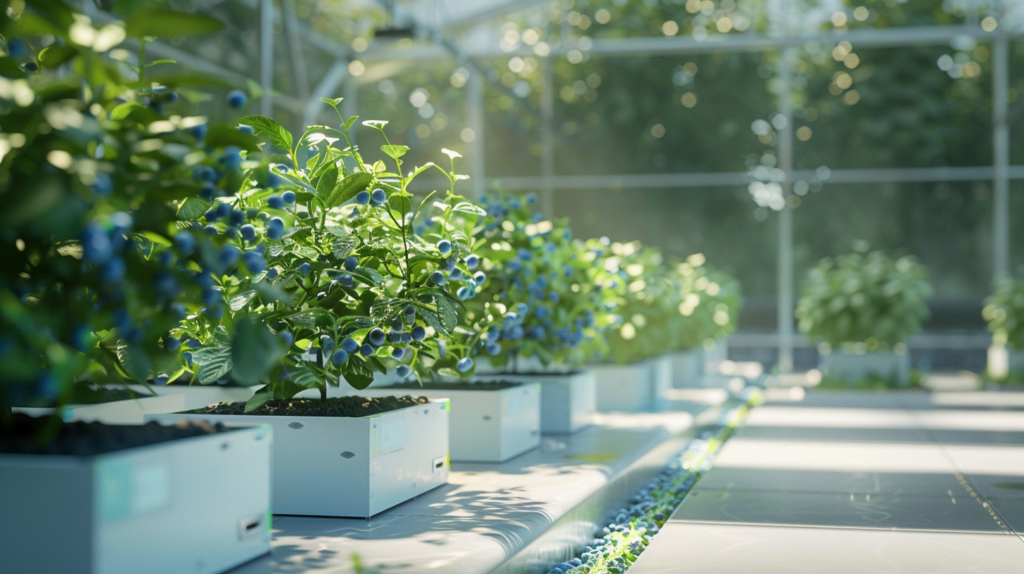
In the realm of hydroponic gardening, the significance of proper lighting cannot be overstated. Light serves as the cornerstone of plant energy through photosynthesis, making the correct balance of intensity, duration, and spectrum crucial for plant health and productivity.
The intensity of light directly influences the photosynthetic activity and, by extension, the growth rate and yield of the plants. Insufficient light may result in weak, underdeveloped plants, whereas too much light can stress and potentially harm them.
The duration of light exposure is also critical, as plants depend on specific light and dark periods to trigger their growth phases and reproductive cycles. Adhering to the natural photoperiods of your plants ensures they progress through their life stages in a healthy, controlled manner.
Moreover, the spectrum of light plays a pivotal role in dictating various growth behaviors. Different wavelengths affect plant functions such as stem strength, leaf size, and the timing of flowering. Tailoring the light spectrum to suit the needs of your plants can optimize these growth characteristics and enhance overall plant vigor.
By investing in a quality lighting setup and meticulously managing the light’s intensity, duration, and spectrum, you can significantly improve the efficiency of your Crop King Hydroponics system, culminating in abundant, high-quality yields.
Temperature and Humidity Control for Optimal Plant Growth
Achieving the perfect balance of temperature and humidity within your Crop King Hydroponics setup is pivotal for fostering the best possible plant growth and yield. These environmental elements are integral to the regulation of critical plant functions such as respiration, transpiration, and the absorption of nutrients.
A conducive temperature range for most hydroponically grown plants falls between 65°F and 85°F (18°C to 29°C), although this can vary slightly based on the type of crop. Deviations from this temperature window can adversely affect plant health, leading to inhibited growth, diminished yields, or in severe cases, plant mortality. Implementing reliable temperature management solutions, including heaters or coolers, is essential for sustaining an optimal growth atmosphere.
Similarly, humidity plays a vital role in plant well-being and productivity. While the ideal humidity level can differ among species, a general guideline for many hydroponic plants is a relative humidity of 50% to 70%. Excessively high humidity may encourage the proliferation of mold and fungal pathogens, whereas too low humidity levels can result in heightened transpiration rates and potential water stress.
By diligently monitoring and adjusting the temperature and humidity settings, gardeners can cultivate an ideal environment that nurtures robust plant growth, encourages prolific flowering, and maximizes yield. The investment in high-quality environmental control equipment is a crucial step towards the thriving success of your hydroponic garden.
Air Circulation and CO2 Enrichment Techniques
Ensuring effective air circulation and employing CO2 enrichment strategies are crucial for enhancing the environmental quality within your Crop King Hydroponics setup. Proper air flow is fundamental not only for stimulating healthy plant development but also for averting the accumulation of stagnant air, which can foster mold growth, disease proliferation, and pest invasions. The use of fans or dedicated air circulation systems facilitates a steady exchange of air, which is vital for optimal gas exchange and transpiration processes in plants. This contributes to vigorous growth, better nutrient absorption, and increased plant strength.
Moreover, augmenting the CO2 levels within the growing environment can markedly improve plant growth rates and yields. Given that CO2 is a key ingredient in the photosynthesis process, enhancing its availability can lead to more efficient growth and development. Techniques for CO2 enrichment, such as the use of CO2 generators or tanks, can be effectively implemented to raise the CO2 concentration to beneficial levels.
However, it is imperative to maintain CO2 within safe and effective limits, as too high concentrations can harm plant health. Careful monitoring and adjustment of CO2 levels, along with ensuring adequate air circulation, are essential practices. These measures work together to forge an optimal growing environment, empowering your hydroponic plants to flourish and achieve their maximum potential.
Tip 4: Monitor and Maintain the System
Diligent monitoring and regular maintenance are the backbones of sustaining the success of your Crop King Hydroponics system over time. Conducting routine inspections and making necessary adjustments are key to preserving the ideal conditions for plant growth, averting potential problems, and ensuring your plants are well-cared for throughout their growth cycle. By being proactive and quickly addressing any issues that arise, you can significantly reduce the likelihood of facing nutrient imbalances, pest outbreaks, or technical failures that could negatively impact your garden’s productivity. Establishing a consistent maintenance routine and adopting a preventative approach to system care will result in robust, fruitful harvests from your hydroponic setup.
Regular Checks for Nutrient Levels, pH, and Water Quality

Ensuring the right equilibrium of nutrients, pH, and water quality is pivotal for the flourishing and yield of your hydroponic garden. It’s imperative to conduct consistent evaluations and make the necessary adjustments to provide your plants with the ideal conditions they need to thrive.
Periodic assessments of nutrient concentrations are crucial, utilizing specific testing equipment or meters. Any imbalances or deficiencies can result in growth issues or visible plant distress, necessitating prompt correction or supplementation of the nutrient mix.
Equally important is the vigilance over pH levels, as minor deviations can significantly affect nutrient uptake. The optimal pH range for most hydroponic gardens is between 5.5 and 6.5, although this may vary based on the plant species.
The integrity of water quality cannot be overlooked, with potential contaminants like algae, bacteria, or excess minerals posing risks to plant health and system functionality. Routine water examinations and appropriate interventions are essential to preserve a pristine and conducive growing environment.
By instituting a regular schedule for monitoring and fine-tuning these critical factors, you can preemptively tackle any arising challenges, ensuring your Crop King Hydroponics system remains highly productive and your plants enjoy the best possible conditions for their growth and development.
Cleaning and Maintenance Routines for the Hydroponic System
A thorough and regular cleaning and maintenance regimen is essential for maintaining the health and efficiency of your Crop King Hydroponics system. Such routines are key to preventing the accumulation of harmful substances like algae and mineral deposits, which can negatively impact plant health and system functionality.
Initiate by conducting a comprehensive clean and sterilization of the entire system before embarking on a new growth cycle. This process should involve a meticulous scrubbing of the nutrient reservoir, grow trays, and irrigation lines to eliminate any lingering debris or biological films. Utilize food-safe sanitizers or hydrogen peroxide solutions to achieve a clean and uncontaminated environment.
Throughout the growth period, maintain a schedule for regular upkeep tasks. These tasks might include the partial replacement of the nutrient solution in the reservoir, the cleaning or replacement of air stones and filters, and a thorough inspection for any signs of wear or potential damage to the system.
It’s also critical to be vigilant and responsive to any signs of trouble, such as the presence of algae, discoloration, or other indicators of contamination. Swift action to diagnose and rectify any issues will help maintain a healthy and productive hydroponic environment.
By committing to a consistent and proactive cleaning and maintenance schedule, you can avert system malfunctions, guarantee efficient nutrient delivery, and foster an environment where your hydroponic plants can thrive.
Identifying and Addressing Common Issues (Pests, Diseases, Nutrient Deficiencies)
Hydroponic systems, while advantageous in many ways, are still susceptible to issues that can affect plant health and yield. Prompt recognition and resolution of these problems are key to sustaining a successful indoor garden.
Pests such as aphids, spider mites, and whiteflies can invade hydroponic environments, harming plants and potentially spreading disease. Conducting routine checks and employing integrated pest management tactics, which may include the introduction of beneficial insects or the application of organic pesticides, are effective ways to control pest populations.
Diseases like root rot, powdery mildew, and blight present significant risks to hydroponic plants. Upholding optimal environmental conditions, adhering to strict hygiene practices, and utilizing preventative measures can greatly reduce the likelihood of disease. Should a disease manifest, swift detection and treatment are imperative to halt its progression.
Nutrient deficiencies manifest through symptoms such as leaf yellowing, growth retardation, or unusual discoloration, signaling an imbalance or insufficiency of essential nutrients. Consistent testing of nutrient solutions and making necessary adjustments can rectify these deficiencies before they impact plant health significantly.
By remaining alert, educating oneself on the typical challenges faced in hydroponics, and taking preemptive actions, gardeners can effectively manage and mitigate potential issues. A well-maintained and balanced hydroponic system not only preserves your investment but also promotes abundant, high-quality yields time after time.
Tip 5: Harvest and Post-Harvest Care
The culmination of your hydroponic gardening efforts lies in the proper execution of harvesting and post-harvest care, which are critical for preserving the quality and extending the life of your produce. Accurate timing and the application of correct harvesting techniques are key to capturing the full spectrum of benefits from your cultivation.
Once your plants have completed their growth cycle, handling them gently is paramount to maintain their freshness and nutritional content. Employing suitable storage solutions and considering various preservation methods can significantly prolong the enjoyment of your hydroponic yields.
By honing your skills in both harvesting and subsequent care, you enhance the overall satisfaction derived from your hydroponic gardening endeavors, ensuring that the taste and health benefits of your produce are optimized.
Determining the Optimal Harvest Time for Different Crops
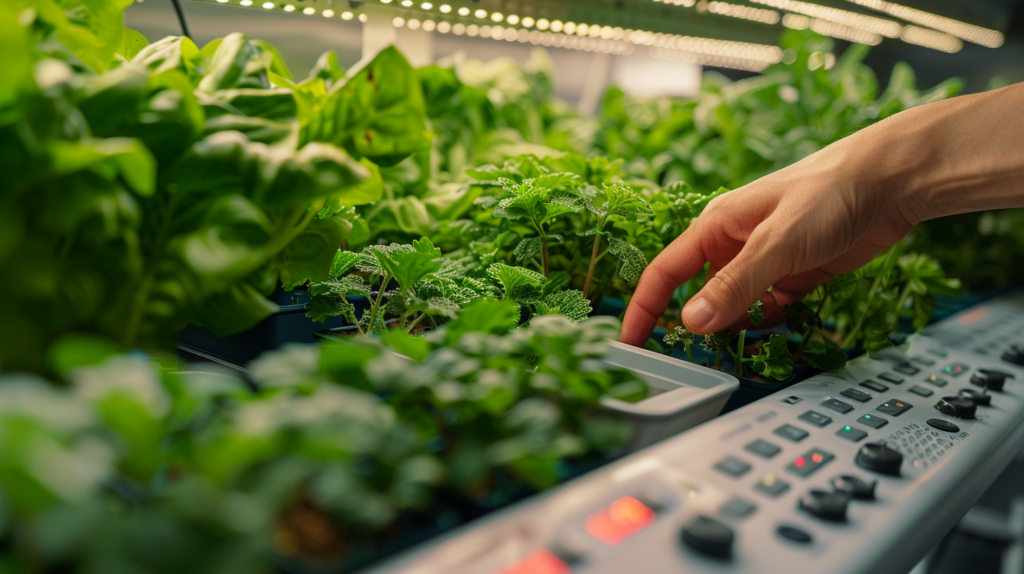
Mastering the timing of harvest is crucial for securing the highest quality from your hydroponic garden. Each type of plant has a distinct growth cycle and a specific window of time when it is most beneficial to harvest, marked by peak maturity, flavor, and nutritional content. Harvesting either prematurely or too late can negatively affect both the quality and quantity of your yield.
For leafy greens and herbs, the prime time for harvest is often signaled by the size and condition of the leaves. Ideal leaves are typically crisp and richly colored. The best time to harvest these plants is when the leaves have reached the desired size but before any signs of yellowing or bolting occur.
Fruiting plants, like tomatoes and peppers, demand a greater degree of patience. The key indicators for these plants include changes in color, size, and texture. Fruits should be harvested when they exhibit their species-specific signs of ripeness, such as achieving a vibrant color or a certain level of softness.
Root vegetables, such as carrots and radishes, are ready for harvest when the foliage above ground indicates mature size, and the roots themselves have sufficiently developed below the surface.
Turning to growing guides or consulting with seasoned hydroponic gardeners can provide valuable insights into identifying the perfect harvesting period for various crops, ensuring you enjoy the best possible taste, nutritional benefits, and overall quality from your garden.
Proper Harvesting Techniques to Maximize Yield and Quality
The application of correct harvesting techniques is a determining factor in the success of your hydroponic garden, with a direct influence on the yield, quality, and durability of your produce. Meticulous handling and precision during the harvest process can greatly enhance the outcomes.
For leafy greens and herbs, it is advisable to use sterilized, sharp scissors or pruners for cutting the leaves or stems. It’s important to leave sufficient growth points on the plant to allow for continued production. Care should be taken to avoid harming the remaining plant parts, as damage can cause stress and slow down the plant’s recovery.
When it comes to fruiting plants like tomatoes or peppers, the fruits should be detached with a gentle twist or a clean cut of the stem just above the fruit, being cautious not to harm the fruit itself. Harvesting early in the day, when temperatures are lower, can contribute to maintaining the freshness and prolonging the shelf life of the produce.
Root vegetables require a delicate approach when being removed from the growing medium to prevent any breakage or harm to the roots. After extraction, any residual growing medium should be lightly removed, and the tops can be trimmed to enhance storage longevity.
Post-harvest, it is crucial to handle the crops gently to minimize handling damage and protect them from heat and direct sunlight. Proper storage methods, including refrigeration or controlled atmosphere storage, are essential to further preserve the shelf life and maintain the high quality of your hydroponic produce.
Storage and Preservation Methods for Hydroponic Produce
Applying the correct storage and preservation methods is vital for prolonging the freshness and quality of your hydroponic produce. With the right techniques, you can extend the enjoyment of your harvest and reduce food waste.
Leafy greens and herbs should be stored in the refrigerator to maintain their freshness. Place them in sealed containers or plastic bags, ensuring as much air as possible is removed to avoid wilting. Certain greens, such as lettuce, may also benefit from a slight misting with water prior to storage to keep them crisp.
For fruiting vegetables like tomatoes and peppers, room temperature storage is suitable for a short period. However, for extended freshness, refrigeration is advisable. Keep these crops away from direct sunlight and extreme temperatures to prevent premature ripening and decay.
Root vegetables, including carrots and radishes, can be kept in the refrigerator. They can be stored in plastic bags or immersed in water to keep them from drying out.
For long-term preservation of your harvest, techniques such as freezing, canning, or drying are effective. Blanching vegetables before freezing can help preserve their color and texture. Canning and drying are excellent for storing produce for extended periods without sacrificing taste or nutritional content.
By adopting suitable storage and preservation strategies, you can ensure that your hydroponic produce remains fresh and nutritious, providing you with a consistent supply of high-quality produce all year round.
Conclusion
Achieving mastery in Crop King Hydroponics is a process that demands commitment, meticulousness, and an openness to continual learning and adjustment. By adhering to the five critical tips discussed – comprehending your hydroponic system, selecting suitable plants, fine-tuning environmental conditions, diligent system monitoring and maintenance, and mastering harvest and post-harvest practices – you are setting the stage for maximizing the potential of your indoor garden.
Hydroponic gardening is a rewarding journey, with each cycle offering a chance to improve your skills and deepen your understanding. Welcome the learning opportunities that come with each challenge, take pride in your achievements, and always seek innovative methods to enhance your hydroponic gardening endeavors.
With persistence and a genuine enthusiasm for growing vibrant, nutrient-rich produce, you will enjoy abundant yields and the profound satisfaction that comes from nurturing your garden to its fullest potential.
Recap of the 5 Essential Tips for Mastering Crop King Hydroponics
In essence, achieving excellence in Crop King Hydroponics involves a holistic strategy that includes five pivotal tips. Firstly, gaining an in-depth understanding of your hydroponic system, including its components and the optimal nutrient solutions and pH levels, is fundamental. This knowledge lays the groundwork for a thriving indoor garden.
Secondly, the selection of plant species should be done with care, ensuring they are suitable for hydroponic growth. Consideration should be given to their growth rates, nutrient needs, and how well they fit within your system’s parameters.
Thirdly, creating the ideal environmental conditions is critical. This involves managing lighting, temperature, humidity, air flow, and CO2 levels to foster healthy plant development and enhance yield.
Fourthly, a rigorous routine of monitoring and maintenance is essential. Regular assessments of nutrient concentrations, pH, and water quality, coupled with systematic cleaning and tackling issues such as pests and diseases, are vital for maintaining system efficiency.
Lastly, perfecting the processes of harvesting and post-harvest care is key. Identifying the best time to harvest, utilizing correct techniques, and applying effective storage and preservation methods are crucial for maintaining the quality and extending the life of your hydroponic produce.
By faithfully adhering to these five critical tips, you will be well-prepared to face the challenges of hydroponic gardening and fully leverage the capabilities of your Crop King Hydroponics system.
Encouragement to Experiment and Continuously Learn for Better Harvests
While the foundational tips for mastering Crop King Hydroponics are invaluable, it’s important to recognize that indoor gardening is an evolving journey of discovery and improvement. Embracing experimentation and staying receptive to new methods and ideas can significantly elevate your gardening success.
Venture into experimenting with various nutrient mixes, environmental adjustments, or different plant species. Each trial is a stepping stone towards broadening your hydroponic expertise and honing your gardening skills. Engage with the hydroponic community, seek out educational materials, and keep abreast of the latest innovations in hydroponic technology.
Adopting a mindset of curiosity and flexibility not only leads to richer harvests but also enriches your personal experience with a sense of achievement and fulfillment. Welcome the learning opportunities presented by each challenge, take pride in your accomplishments, and allow your enthusiasm for hydroponic gardening to propel you to new heights of mastery.


